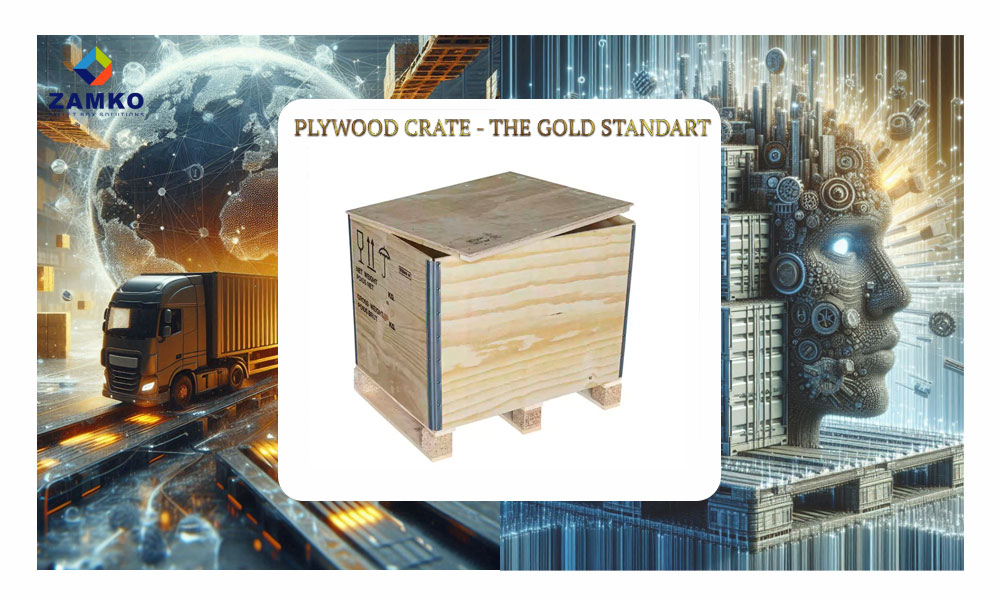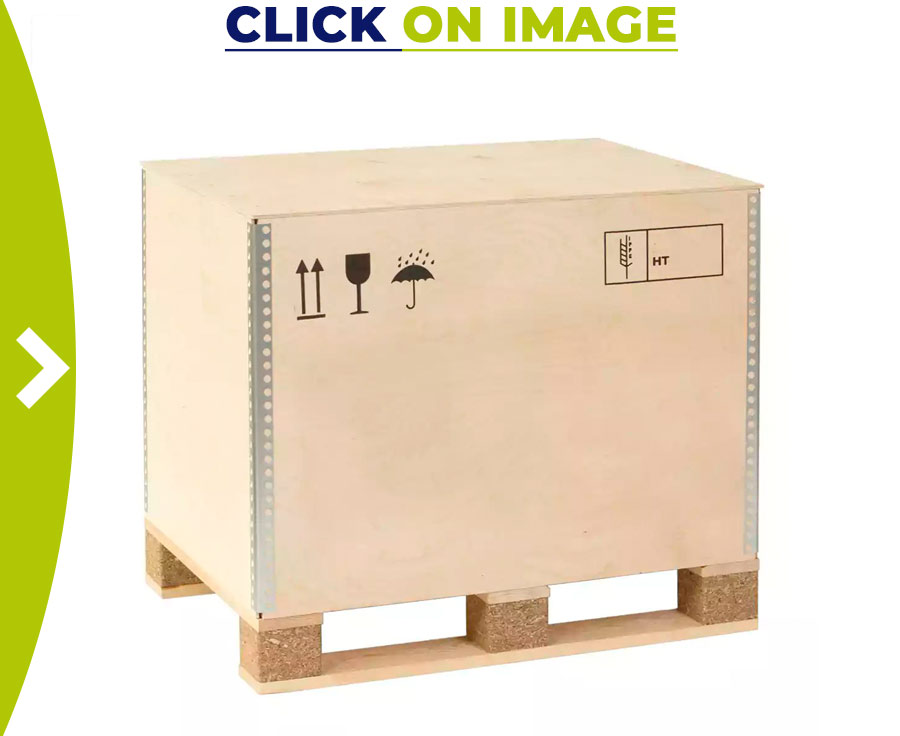Why Plywood Crates Are the Gold Standard for Global Product Protection

Plywood Crates = Gold Standart
Plywood Crates and the Golden standard. The global wooden crates market was valued at $986 million in 2022 and is projected to reach $1.4 billion by 2030. This growth reflects a shift in packaging priorities. Companies now seek durability, sustainability, and cost-efficiency. Plywood crates deliver all three.
Industries from automotive to pharmaceuticals rely on plywood pallet boxes. These crates resist impact, moisture, and stacking pressure. Unlike cardboard, they don’t collapse under weight or humidity. That’s why plywood pallet crates by Zamko are trusted across Europe.
Q: Why do manufacturers prefer plywood over cardboard?
- Durability: Plywood crates withstand heavy loads and rough handling.
- Reusability: Unlike cardboard, plywood can be reused multiple times.
- Protection: They shield sensitive goods from moisture and crushing.
- Compliance: Plywood crates meet ISPM 15 standards for international shipping.
The Hidden Costs of Using Cardboard for Export
Cardboard may seem cheaper upfront. But hidden costs quickly add up. Damaged goods, insurance claims, and customer complaints erode profits.
Damage Rates Comparison
- Cardboard packaging: Up to 30% damage rate in high-humidity environments
- Plywood crates: Less than 5% damage rate under similar conditions
Insurance Implications
- Cardboard shipments face higher premiums due to frequent claims.
- Plywood crates reduce risk, lowering insurance costs over time.
Reputational Risks
- Damaged deliveries harm brand trust.
- Reliable packaging builds customer loyalty.
Q: How do plywood pallet crates save money?
- Fewer replacements: Plywood lasts longer than cardboard.
- Lower claims: Reduced damage means fewer insurance disputes.
- Better stacking: Efficient use of space cuts freight costs.
- Reduced returns: Fewer damaged goods mean fewer refunds.
- Improved customer satisfaction: Reliable delivery boosts repeat business.
Top 5 Mistakes to Avoid When Choosing Packaging for International Shipping
Choosing the wrong packaging can derail global logistics. Here are five common errors—and how to avoid them.
- Using Inadequate Materials
Cardboard fails under moisture, weight, and long transit. Plywood crates offer superior protection.
- Ignoring ISPM 15 Compliance
Wood packaging must be heat-treated and stamped. Non-compliance leads to customs delays or rejections.
- Overlooking Labeling Requirements
Missing or incorrect labels cause confusion and fines. Always include destination, weight, and handling instructions.
- Underestimating Environmental Conditions
Humidity, temperature, and vibration affect cargo. Plywood crates resist these better than cardboard.
- Choosing Packaging Without Sector-Specific Needs
Each industry has unique demands. Generic packaging fails to meet them.
Sector-Specific Applications of Plywood Crates
Automotive
Heavy parts need strong packaging. Zamko’s plywood pallet boxes protect engines, gearboxes, and brake systems.
Pharmaceuticals
Sensitive products require sterile, moisture-resistant crates. Plywood with internal liners ensures safe delivery.
Aerospace
Precision instruments demand shock-proof packaging. Plywood crates with foam inserts prevent vibration damage.
Agriculture
Fresh produce needs breathable yet sturdy containers. Plywood crates maintain structure and reduce spoilage.
Electronics
High-value items like servers and routers need anti-static, impact-resistant packaging. Plywood crates meet these needs.
Retail & E-commerce
Reusable plywood pallet crates reduce waste and support sustainability goals. They also lower return rates due to damage.
Q&A: How Do Zamko’s Plywood Crates Adapt to Different Industries?
Q: Can Zamko’s crates be customized for fragile goods? Yes. Foam inserts, corner protection, and anti-static liners are available.
Q: Are Zamko’s crates reusable? Absolutely. Many clients reuse them for up to 10 cycles.
Q: Do they meet international standards? Yes. All Zamko plywood pallet crates comply with ISPM 15 and EU regulations.
Q: Are they suitable for automated handling systems? Yes. Zamko’s crates are designed for forklift and conveyor compatibility.
Q: Can they be stacked in high-density warehouses? Yes. Their structural integrity supports vertical stacking without collapse.
Environmental and Regulatory Advantages
Wooden crates, including plywood, are biodegradable and recyclable. Compared to cardboard, they have lower global warming potential, acidification, and toxicity scores.
Sustainability Stats
- 65% of consumers prefer reusable packaging
- EU aims to reduce packaging waste by 5% by 2030
- Wooden crates support circular economy goals
Compliance Benefits
- Plywood crates meet phytosanitary standards (ISPM 15)
- Cardboard often fails under moisture, risking customs rejection
- Wooden crates reduce regulatory friction in cross-border shipping
Quick Comparison: Plywood vs Cardboard
| Feature | Plywood Crates | Cardboard Boxes |
| Strength | High | Low |
| Moisture Resistance | Moderate to High | Very Low |
| Reusability | High | Low |
| Environmental Impact | Biodegradable & Recyclable | Recyclable only |
| Damage Rate | <5% | Up to 30% |
| Insurance Premiums | Lower | Higher |
| Regulatory Compliance | ISPM 15 Certified | Often Non-Compliant |
Make the Smart Choice for Global Shipping
Why Plywood Crates Win
Plywood crates offer unmatched durability, compliance, and cost-efficiency. They outperform cardboard in every key metric. Whether you’re shipping pharmaceuticals or industrial machinery, plywood is the smart choice.
Zamko B.V. helps businesses ship smarter. Explore our product range or contact us for expert advice. You can also find us on LinkedIn and YouTube.
📞 Call us at +31 40 711 47 17 to discuss your packaging needs.

